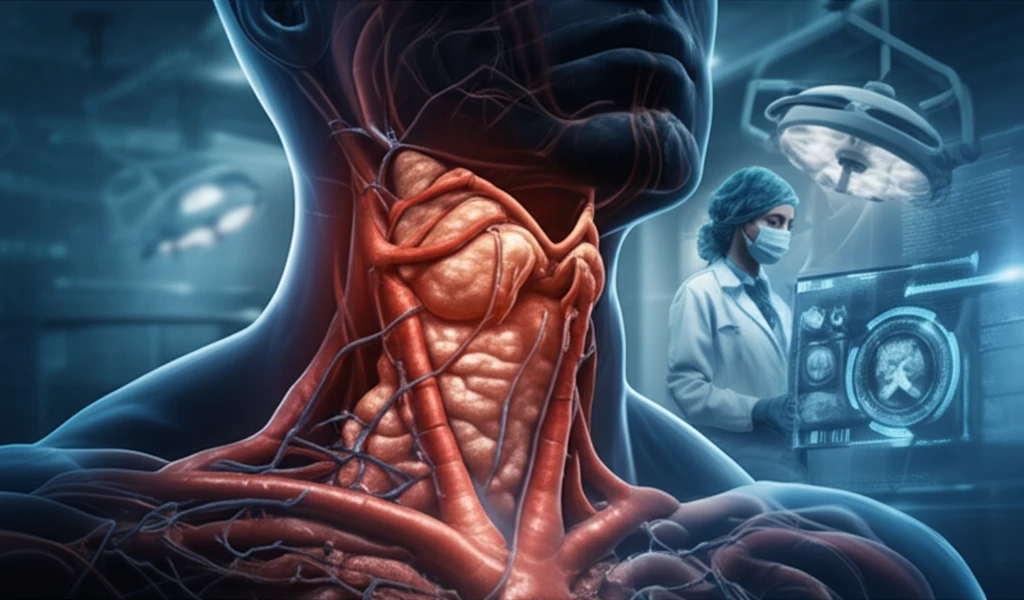
Hidden Threat: When Your Goiter Blocks More Than Just Your Throat
"Unveiling the rare but serious complication of retrosternal goiters—superior vena cava obstruction—and what it means for your health."
Imagine a goiter, that familiar swelling in the neck, growing not just outward but inward, pressing against vital structures. This is a retrosternal goiter, a less common but potentially dangerous condition. While most goiters are benign and cause only mild discomfort, a retrosternal goiter can extend into the chest cavity, leading to serious complications.
One of the most concerning of these complications is superior vena cava obstruction (SVCO). The superior vena cava is a major vein that carries blood from the upper body back to the heart. When a retrosternal goiter presses on this vein, it can restrict blood flow, leading to a cascade of symptoms that require prompt medical attention.
This article explores the rare but critical connection between retrosternal goiters and SVCO, highlighting the symptoms, diagnostic approaches, and treatment strategies necessary to address this complex condition. Understanding this potential threat can empower you to take proactive steps for your health.
What is Superior Vena Cava Obstruction (SVCO) and How Does a Goiter Cause It?

Superior vena cava obstruction (SVCO) occurs when the superior vena cava, the large vein carrying blood from the head, neck, and upper extremities to the heart, is blocked or compressed. This obstruction impairs blood flow, leading to a backup of blood in the upper body. While SVCO can result from various causes, including tumors, blood clots, and infections, a retrosternal goiter is a notable, albeit less common, culprit.
- Physical Compression: The goiter's mass directly presses on the superior vena cava.
- Inflammation and Fibrosis: Chronic goiters can cause inflammation and scarring (fibrosis) around the vein, further constricting it.
- Location: Goiters located in the upper chest cavity are more likely to compress the superior vena cava.
Taking Control of Your Thyroid Health
While the connection between retrosternal goiters and superior vena cava obstruction is rare, understanding the potential risks and symptoms can empower you to take control of your thyroid health. If you experience any of the concerning symptoms discussed, don't hesitate to seek medical attention. Early diagnosis and treatment can significantly improve outcomes and ensure a better quality of life.
